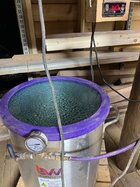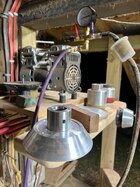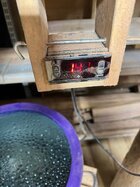I'm surprised that the latest posts regarding DIY vacuum kilns for drying bowl blanks are from 2012 - assuming I was searching correctly. So, I thought I'd start a new thread and discuss my experiences so far. I bought a 15-gallon vacuum chamber from Amazon, along with a 16" Vacuum chamber digital heating pad some valves and other plumbing parts, and I'm using the Frugal Oil-FreeVacuum Pump that I already had for my vacuum chucks.
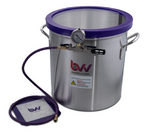
https://www.amazon.com/gp/product/B08PSP45TB/ref=ppx_yo_dt_b_search_asin_title?ie=UTF8&psc=1
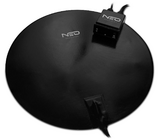
https://www.amazon.com/gp/product/B01L0M494Y/ref=ppx_yo_dt_b_search_asin_title?ie=UTF8&psc=1
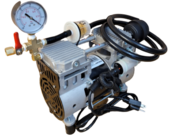
https://www.frugalvacuumchuck.com/home.html
I'm not affiliated - just posting links if anyone is interested. I've only dried one load of two large walnut blanks so far, and I didn't really get them dry enough - I had to finish in the microwave. I have a second small load in the chamber now (two 12" and one 14" blanks 3 and 4 inches thick, respectively, very wet, green, and waxed from eBay), and I have a few questions that I hoped someone with more experience could answer. I get a lot of condensation on the glass lid. Big droplets precariously cling to and cover the entire inside surface of the heavy glass lid. The walls and floor of the pot also get pretty damp. Should I stop the vacuum now and then, remove the lid, and dry most of the liquid water out? Just letting air flow back into the chamber causes many droplets to dislodge and fall onto the blanks below. Or is it better to just keep the vacuum and heat running without interruption? I have the heating mat set to 140 degrees, but I don't have anything to measure the temperature of the wood in the chamber. In other words, should the drying/heating process be continuous or cyclic for best results? I hope to get some other pointers and spur a more up-to-date conversation.

https://www.amazon.com/gp/product/B08PSP45TB/ref=ppx_yo_dt_b_search_asin_title?ie=UTF8&psc=1

https://www.amazon.com/gp/product/B01L0M494Y/ref=ppx_yo_dt_b_search_asin_title?ie=UTF8&psc=1

https://www.frugalvacuumchuck.com/home.html
I'm not affiliated - just posting links if anyone is interested. I've only dried one load of two large walnut blanks so far, and I didn't really get them dry enough - I had to finish in the microwave. I have a second small load in the chamber now (two 12" and one 14" blanks 3 and 4 inches thick, respectively, very wet, green, and waxed from eBay), and I have a few questions that I hoped someone with more experience could answer. I get a lot of condensation on the glass lid. Big droplets precariously cling to and cover the entire inside surface of the heavy glass lid. The walls and floor of the pot also get pretty damp. Should I stop the vacuum now and then, remove the lid, and dry most of the liquid water out? Just letting air flow back into the chamber causes many droplets to dislodge and fall onto the blanks below. Or is it better to just keep the vacuum and heat running without interruption? I have the heating mat set to 140 degrees, but I don't have anything to measure the temperature of the wood in the chamber. In other words, should the drying/heating process be continuous or cyclic for best results? I hope to get some other pointers and spur a more up-to-date conversation.

